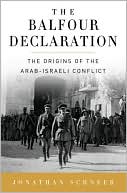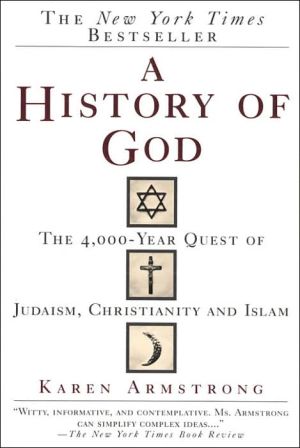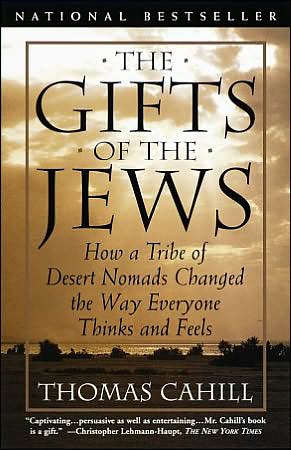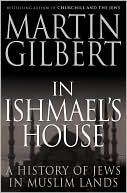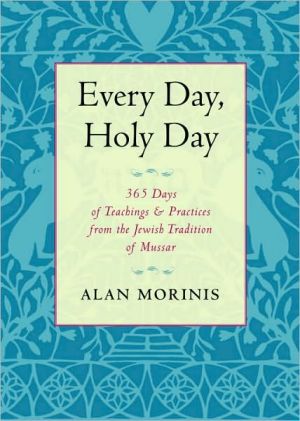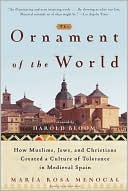Israel Is Real: An Obsessive Quest to Understand the Jewish Nation and Its History
A NEW YORK TIMES BOOK REVIEW EDITORS' CHOICE\ \ A SAN FRANCISCO CHRONICLE BESTSELLER\ \ In AD 70, when the Second Temple was destroyed, a handful of visionaries saved Judaism by reinventing it, taking what had been a national religion and turning it into an idea. Whenever a Jew studied—wherever he was—he would be in the holy city, and his faith preserved. But in our own time, Zionists have turned the book back into a temple, and unlike an idea, a temple can be destroyed. With...
Search in google:
Praised everywhere from The New York Times to The Jerusalem Post, Cohen returns with an irreverent, erudite, and wildly entertaining history of Zion through the ages that is unlike any on the subject.
Israel Is Real\ An Obsessive Quest to Understand the Jewish Nation and Its History \ \ By Cohen, Rich \ Picador\ Copyright © 2010 Cohen, Rich\ All right reserved.\ ISBN: 9780312429768 \ \ \ ONE\ The Fire\ Most great cities have a reason for being where they are, and doing what they do. Either they sit at the confluence of great rivers, at the head of a mountain pass, on the shore of a canal, on a trade route or a railroad crossing or a superhighway, but Jerusalem, as far as anyone can tell, has no reason for being where it is—at the edge of the desert, on a hill surrounded by identical hills, guarding nothing but itself, doing nothing but being Jerusalem.\ Is it the oldest city in the world?\ No. Jericho is older. But it’s in that same league, from the same place in time. Always at issue. Always changing hands, filling and emptying. Stained with the blood of its citizens. Claimed by people who do not live there—nor did their parents, nor did their grandparents—but who still consider it their own. It exists in the past, as the capital of a lost civilization. It exists in the future, as the portal to the next world. It exists everywhere but in the present. It’s where the past and the future overwhelm the present.\ Jerusalem is first mentioned in Egyptian writings circa 1900 BC, where it’s called Aushamen, a city on a hill on the far side of the desert. It turns up later, in the literature of Acadia and Assyria, as Urushalima, city of the deity Shalem. It was then a Canaanite city, holy to the priests of Ba’al. In the Torah, in which it’s mentioned just once, it’s called Salem. It’s where Abraham, on his way home from battle, is given sustenance by the stranger "Melchizedek, the king of Salem," who, according to Genesis, "brought forth bread and wine: and he was the priest of the most high God. And he blessed [Abraham], and said, 'Blessed be Abram of the most high God, possessor of heaven and earth.’ "\ Melchizedek is the spirit of the Canaanite city blessing and forgiving its future usurpers: this story is like a mural in which Pocahontas kisses John Smith. To Christians, Melchizedek prefigures Christ, hints at Christ’s coming, or is Christ Himself, the founder of a clerical line that will be fulfilled in the Church. That’s why he blesses Abraham with bread and wine, the meal of the last supper and the Catholic Mass. In the New Testament, Melchizedek is called a "priest forever," an eternal priest who was never born and never dies, who always existed and always will, as the holy city always existed and always will.\ Jerusalem entered history in 1000 BC, when it was conquered by David, the warlord who became king of the Hebrews.* David, who was in the process of uniting the scattered Hebrew tribes, picked Jerusalem as his capital because it was on neutral ground, located between the northern and southern kingdoms (Judea and Samaria) but had no special meaning to either. (It was chosen in the way Washington, D.C., was chosen.) It had already been hallowed by hundreds of years of Canaanite sacrifices to their gods Ba’al and Ashera,† deities who appear in the Bible as examples of the defunct order. In other words, Jerusalem was holy to Jews because it had been holy to Canaanites. Holy because it always had been, always had been because it always was.\ *The word Jew began to refer to the people as a whole—as opposed to merely the members of the tribe of Judah—around 700 BC, following the destruction of the nation’s northern kingdom (Israel) by Assyria.\ †Ba’al was worshipped in Jerusalem even after the Temple was built. During times of backsliding, altars to the Canaanite god sat beside altars to Yahweh. In the reign of Josiah, while the Temple was being renovated, a lost scroll was found between the walls. Josiah studied the scroll (probably Deuteronomy), read it to his priests, rent his garments, and went into mourning. The next day, all statues and altars to Ba’al were dragged off Mount Moriah and burned.\ David moved the Ark of the Covenant to his new capital. It was kept in a tent on a hill in the center of the city. When Solomon became king, he built a house for the Ark, thus a house for the Lord. The Temple of Solomon lingers in Jewish imagination as the center of the world when the world was whole. This move from tabernacle to temple represents the evolution of the Jews from tent-dwelling Bedouins to book-reading urbanites. The hill, which flattened out on top, had been used as a threshing floor by the Canaanites and was later identified as the Mountain of God—where the first man was made of clay, where Abraham bound Isaac. "Get thee into the land of Moriah, and offer him there for a burnt offering." It’s unclear if everything happened on this mountain or if, when something enormous does happen, you are somehow back on the mountain, the navel of the world.\ By moving the Ark to Jerusalem, David made his capital the center of political and religious power. Over time, it became something more: a symbol, a metaphor. It was the city as civilization, sacred as all cities are sacred. As Paris is sacred. As New York is sacred. But more so. The most famous story associated with Jerusalem is that of David and Bathsheba. The king looks out from the roof of his palace and sees Bathsheba washing herself. Sends for her. The rest is tragedy. The collapse of the United Kingdom of Israel. What is of interest here are the logistics: the fact that by looking from his roof David can see a woman bathing. This happens only in a city. In a sense, the downfall of the Jews results from the temptation and sin that come from life in a city—its concentration and compression, all those windows stacked on top of one another.\ Jerusalem came to have a spiritual power not warranted by its size. It’s a model for all great cities. When plans were drawn for Moscow in the seventh century, one proposal (not executed) based the city on the layout of Jerusalem, as depicted in the Book of Ezekiel. When Lali-bela, the king of Ethiopia, returned from exile in Jerusalem (or maybe the idea came in a vision or dream; no one is really sure) he rebuilt his capital as a copy of the holy city, with churches and buildings carved from African sandstone. Jerusalem became a prize, a treasure to be taken and dominated. The list of its conquerors is the story of the world: Hebrews, Babylonians, Persians, Greeks, Romans, Arabs, Turks, Britons, Zionists. It entered the orbit of Rome in ad 66. The legions came at the invitation of Jews, who wanted them to establish order at a time of civil unrest. There had long been tension in the city between Hellenized Jews, who behaved like Greeks, and those who followed the ascetic faith of the desert.\ The Romans restored order, then stayed, which is how Israel became a vassal, then a province. We know what this Jerusalem looked like. From letters, documents, books. It was dust colored and sat on a hill. It was a confusion of walls and streets. There were markets, mansions, slums. There was an Upper City and a Lower City. There was a trash dump in a valley called Gehenna, where pagans practiced human sacrifice. There was an underground spring, tunnels, chambers where food was stored in case of a siege. As you approached from the west, you would first see the Temple, then the walls. There was a sharp line between city and country, a black line, where wilderness ended and civilization began. One moment you were in the desert, the next you were swallowed up in the noise and chaos of town.\ You could not live under the Roman emperor and practice as a Jew. Not really. Roman officials looted the treasury and abused the priests. Roman soldiers sacrificed to pagan gods on the Temple Mount. To the Romans, every holy place offered access to the eternal, as in our time every money card works at every ATM. In ad 39, when Caligula declared himself a living god and gave orders to raise his statue in the Temple, the Jews rioted. These two cultures, occupying the same land, ground against each other. The particularity of the Jews—the fact that they recognized no god but their own—was a constant irritation to Rome. Why wouldn’t the Jews, these tax-paying vassals, accept what was plain to the conquerors? That the Hebrew God was inferior to the gods of the Imperium.\ This refusal alone was reason to hate the Jews—a hatred widespread even in the ancient world. Without saying so, the Jews seemed to insist that only their belief was true. In The Decline and Fall of the Roman Empire, Edward Gibbon calls Jews the "single people [who] refused to join in . . . the common intercourse of mankind. The sullen obstinacy with which they maintained their peculiar rites and unsocial manners seemed to mark them out as a distinct species of men, who boldly professed or faintly disguised their implacable hatred to the rest of humankind."\ Rebellion was inevitable. In the event of rebellion, Roman victory was inevitable. In this way, the destruction of Jerusalem was also inevitable. The city was created to be destroyed. Is created and recreated to be destroyed again and again. The story of Jerusalem is not complete if it is not destroyed. As the story of Rome is not complete if it does not destroy. Rome destroys, Jerusalem gets destroyed. Flesh and spirit, reason and faith. Jerusalem needs Rome as Jesus needs Judas: to be sacrificed into a symbol. By being destroyed, Jerusalem sheds its skin, its alleys and markets and tortured history, and becomes immortal.\ The last days of the ancient kingdom were rank with false messiahs and premonitions. The Book of Daniel, the Book of Revelation. The seven angels came out of the Temple, having seven plagues, clothed in pure white linen. When Jesus told Mark, "Seest thou these great buildings? There shall not be left one stone upon another, that shall not be thrown down," he was working less as a prophet than as a poet, amplifying the mood of his time. How should a Jew live? How should a Jew face occupation? These were the questions of the day. There were moderates who said Jews should find a way to exist in the Roman world. There were Essenes who, in their practice, seemed to say the only way to survive as a Jew was to leave Jerusalem. There were Zealots who said to be a Jew in a Roman world is to fight and die. When Christ said, "Render unto Caesar," he was, in a way, responding to the Zealots, giving the people permission to live.\ It was a golden age of building. A boom. Projects paid for by Rome in hopes of winning the consent of the ruled. Herod, who had been made the king of Judea by the occupier, restored the walls of Jerusalem, built hippodromes and theaters, littered the countryside with palaces. He rebuilt the Temple, restoring it to a glory it had not known since the age of Solomon. (The First Temple had been destroyed by the Babylonians in 586 BC.) When people think of the Jewish Temple, it’s this building they have in mind: stark, white, glowing in the sun. Herod followed the plan described in the Book of Kings—God was the architect, Herod his contractor—60 cubits by 20 cubits by 40 cubits; 162 columns; reached by fourteen steps; entered through 9 gates, each with a double door plated in bronze and silver. There were royal chambers, porches, pedestals for the shofar blowers. (The ram’s horn, perhaps the most ancient wind instrument in the world, was blown on the Temple Mount to announce new moons, feast days, jubilees, etc.; today it is heard in the synagogue on Rosh Hashanah and Yom Kip-pur.) There was a courtyard for men and a courtyard for women and a courtyard for Gentiles. At the gate to the inner court a sign warned, in Latin and Greek, NO FOREIGNER MAY PASS WITHIN THE LATTICE AND WALL AROUND THE SANCTUARY. WHOEVER IS CAUGHT, THE GUILT FOR HIS DEATH WILL BE HIS OWN. Gardens and cloisters and chambers, and chambers within chambers, all centered around an outer court, centered around an inner court, centered around the holy of holies, a black room, twenty cubits by twenty cubits, where, once a year, the high priest stood alone in the dark and whispered the secret name of God.\ It took eighty years to finish the Temple. Here’s how Josephus, the Jewish general who became a citizen of Rome, described it in his history:\ Viewed from without, the sanctuary had everything that could amaze either mind or eye. Overlaid all around with stout plates of gold, in the first rays of the sun it reflected so fierce a blaze of fire that those who endeavored to look at it were forced to turn away as if they had looked straight at the sun. To strangers as they approached, it seemed in the distance like a mountain covered with snow; for any part that was not covered with gold was dazzling white.\ Historians cite various proximate causes for the first Jewish revolt, which did not come until after a century of Roman rule. In ad 66, for example, in Caesarea, a mixed town of Greeks and Jews on the Mediterranean, Greeks, as part of a pagan ceremony, sacrificed birds at the doors of a Hebrew shrine, which Jews understood as a sacrilege and a threat (in the nature of finding a cross burning on one’s lawn). When Jewish leaders asked for protection, the Romans refused, saying they wanted no part in sectarian strife. Word of this refusal swept through the community. By the time it reached Jerusalem, people were in a rage. The Zealots, a radical religious party, said there could be no peace with Rome. It was God or Caesar. They set upon the occupiers, sacked the garrisons, burned the barracks, stormed the forts, most spectacularly the mountaintop stronghold of Masada, which had been built as a palace by Herod.\ Meanwhile, a debate was taking place between the Zealots and a group later known as the Peace Party: accommodation or war? What if the Zealots had lost this argument? What if the Temple had survived? Would people still speak of "the Jewish character"? Perhaps this speculation is pointless. If the Germans don’t invade Russia, they’re not the Germans. If the American colonists don’t throw off the British, they’re not the Americans. If the Jews don’t rebel against Rome, they’re not the Jews.\ The Romans assembled a small army in Antioch; to Rome, this was still a minor disturbance, easily repressed. The Twelfth Legion, serving under General Cestius Gallus, invaded from the north. They marched in columns, the road stretching away behind them. They wore black metal chest-and-backplates held together by leather straps; iron helmets; neck guards; hobnail boots that laced to the calf; and metal belts that holstered a knife, a double-edged sword, and a javelin. They raised their shields as they went into battle, making a canopy of leather, each shield decorated with the symbol of its legion: tiger, serpent, eagle. They were met outside each town by fanatics, Zealots in flowing robes, head scarves, sandals. In the folds of their coats, the Zealots carried little knives, which they wielded in the manner of the Tongs, the Chinese gangs of New York. This army was led by a priest named John. Before each battle, the Jews cleaned their bodies, said their prayers. They did not fear death, and so fought with an abandon that terrified the professional soldiers of Rome. They hid in caves, then attacked as if out of nowhere. The Roman legion was destroyed, the bodies of its soldiers left to rot in the sun.\ There were celebrations in the walled cities of Judea. The Temple was filled with worshippers. Coins were struck depicting a victorious Jewish soldier standing over the body of a defeated Roman.\ This was a moment when Rome could have lost its empire. There were rebellions in several provinces. Judea would serve as the example. In ad 67, Vespasian, considered the greatest soldier in Rome, led sixty thousand men—a huge army for the time—into the Galilee. His method was massacre. Burn everything. The first battle was fought in a town called Gadera.\ Here’s how Josephus described it in The Jewish War:\ Vespasian descended on Gadera, and finding it almost without defenders took it at the first assault. He marched into the town and put to the sword all except small children, the Romans showing mercy to neither young nor old through hatred of the nation and the memory of the way they had treated Cestius. He burnt down not only the town but all the hamlets and villages around the town. Some of these he found completely abandoned; from others he carried off all the occupants as slaves.\ Vespasian made his headquarters in Caesarea, where he was joined by his son Titus. I’ve seen busts of Vespasian. He had a weak chin, narrow eyes set far apart—on opposite sides of his head, like a hawk—and scanty strands of hair. After Vespasian defeated a Jewish town, the Greeks of Caesarea honored him with a twenty-day party. At first Vespasian waged war exclusively in the north, the most radical part of the country. If the Jews were defeated in the north, he said, the rest of the nation might fall without a fight. One after another, the ancient towns were surrounded, starved, conquered. If the defenders surrendered, the men were killed, the women sold into slavery. If the defenders did not surrender and were quickly defeated, the men were killed, the women were killed, and the children were sold into slavery. If the defenders fought with limited success, the men were killed, the women were killed, the children were killed, and the babies were sold into slavery. If the defenders fought with great success, the men were killed, the women were killed, the children were killed, the babies were killed, and the town was burned.\ In the course of the war, the Galilee was depopulated; six thousand young Jews were sent to work on the isthmus of Corinth, twelve hundred old Jews were killed, and the rest, more than thirty thousand people, were sold into slavery.*\ The war in the north culminated in Gamla. To get there from Tiberias, which is the largest town in northern Israel and, not co-incidentally, the only town spared by Vespasian—the entire population surrendered before a javelin was thrown—you take Road 92, which hugs the Galilee. In the summer, the sea is a luminous blue eye. On the eastern shore, the hills rise from the beach to the black folds of Syria. At the first intersection, you turn onto Road 869, which follows switchbacks into the Golan Heights. The road narrows as you climb, the air turns wintry. This is territory Israel captured in 1967. Before that, Syria used it as a base, with reconnaissance posts and missile sites. When Israel captured it, they built posts and sites of their own. Along the way, you see cannons built into the rock, then reach a plateau that comes like a crescendo at the end of a symphony. Grasslands ringed by mountains. Birds of prey. Pine needles. The country is beautiful because it’s terrible and old.\ Gamla is one of the great archeological sites of the Jewish Revolt, a place where the Zealots made a dramatic stand, where the old Israel with its warrior Jew passed into lore. Yet, unlike Masada, it never became a holy place for Zionists—partly because it’s so hard to reach, with no bus service or cable car; partly because it was not excavated until after the Six-Day War, by which time Israelis no longer needed a shrine to Jewish heroism. In other words, Gamla missed its moment. It’s like an actress who would have been perfect in silent movies but was discovered after The Jazz Singer.\ *See The Jewish Encyclopedia.\ It was a two-hour walk from the parking lot, most of it along a treacherous path. The town itself is perched on a peak that rises from the valley floor. It’s a geological oddity, a city on an island in a sea without water. On either side, the path drops into a green abyss. Hawks turn above. That day, the sky was filled with the type of clouds that meteorologists call "fair weather cumulus," flat bottoms and cottony peaks. The sun came through in search beams, Jacob’s ladders, which, according to Genesis, are "ramps set against the ground with tops reaching the Heavens, with messengers of God going up and coming down." I could see hills in the distance. Some were one kind of green, some were another kind. The path grew steeper. I had to scramble. The peaks around the town loomed and leaned and towered ominously ahead, peaks that rise in humps and give the town its name: Gamla derives from "camel."\ The town itself was a snug piece of work, with houses and storerooms and ritual baths and terraces squeezed inside a wall sitting on a cliff. There was a lower city and an upper city, with a gate between. If the walls of the lower city fell, the people could retreat to the upper city. Like a ship, in which, in case of a breach, you seal off the lower galley and move to the upper decks. The windows of the town stood hundreds of feet above the valley. Above these were towers that commanded a view of the country for miles.\ Excerpted from Israel is real by Rich Cohen.\ Copyright © 2009 by Rich Cohen.\ Published in 2009 by Farrar, Straus and Giroux.\ All rights reserved. This work is protected under copyright laws and reproduction is strictly prohibited. Permission to reproduce the material in any manner or medium must be secured from the Publisher.\ \ \ Continues... \ \ \ \ Excerpted from Israel Is Real by Cohen, Rich Copyright © 2010 by Cohen, Rich. Excerpted by permission.\ All rights reserved. No part of this excerpt may be reproduced or reprinted without permission in writing from the publisher.\ Excerpts are provided by Dial-A-Book Inc. solely for the personal use of visitors to this web site. \ \
\ From the Publisher“Accomplishes the miraculous. It made a subject that has vexed me since early childhood into a riveting story . . . by narrating the oft-told saga of the Jews in a fresh and engaging fashion. Provocative and entertaining … Cohen brings tough love to Judaism and modern Israel.”—Tony Horowitz, The New York Times Book Review\ “A smart, energetic overview of the history of Israel and its relation to the Jewish people, from biblical times to the present. Cohen's narrative is propelled by muscular prose and an irreverent wit at times reminiscent of Jon Stewart. . . . Absorbing, clear-eyed history.” —The Boston Globe\ “A sweeping and impressionistic saga . . . [which] also happens to be a page-turning delight to read. What other book about Zionist history has ever included references to “Howl,” “Goodfellas,” Joseph Mitchell, and Willie Dixon? I commend and admire this book.” —Samuel G Freedman, Chicago Tribune\ “Makes complex history simple and witty without losing sight of the big ideas.” —New York Magazine\ “Intoxicating . . . Cohen has maverick tendencies and a wicked sense of irony, coupled with a bristling ambivalence about all dogma that permeates his search for understanding. . . . Wild-eyed and thoughtful.” —The Jerusalem Post\ “Cohen is thorough in his research and thoroughly engaging in his writing. Israel is Real is a richly historical and intensely personal study of a nation that's as much of a state of mind as a place on the map.” —The San Diego Union-Tribune\ “Cohen is a masterful and slyly provocative writer who marches boldly into the most controversial issues posed by the existence of Israel. Blending historical narrative with contemporary reportage, Israel Is Real makes an argument that cannot be ignored. Along the way, Cohen establishes himself as being among the most talented essayists of his generation.”—Evan Wright, author of Generation Kill\ “A fascinating big-picture account of Israel from its distant past to what happened last week. Rich Cohen tells this story central to mankind with skill, passion, common sense, and wit.”—Ian Frazier, author of Great Plains\ “Rich Cohen’s passionate, engaged, thoroughly modern book is—dare I say—a revelation.”—Jeffrey Toobin, author of The Nine: Inside the Secret World of the Supreme Court\ “The best book I’ve ever read about Israel (that troubled state), and the last word on it: all the stories, all the figures, all the fires, all the battles, all the exiles, all the personalities, all the strikes, and all the gutters. Rich Cohen has delivered the full big thing, a monumental book, the best I’ve read and expect to read for a long time. As the priests in the old city would say, it has hava: it’s full of life.”—David Lipsky, author of Absolutely American: Four Years at West Point\ “Nobody has yet written about our Middle East heartbreak with such range and lucidity. Rich Cohen has kept an account of the wanderings; he’s kept a record of the tears. Israel Is Real is the definitive book on Israel.”—Darin Strauss, author of Chang and Eng\ “Rich Cohen’s book creates a vibrant portrait that offers reasons Israel—surrounded by those who want to exterminate it—deserves to survive.”—Ron Rosenbaum, author of Explaining Hitler\ \ \

